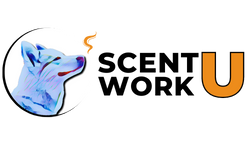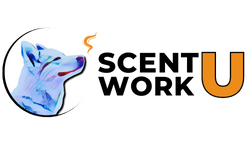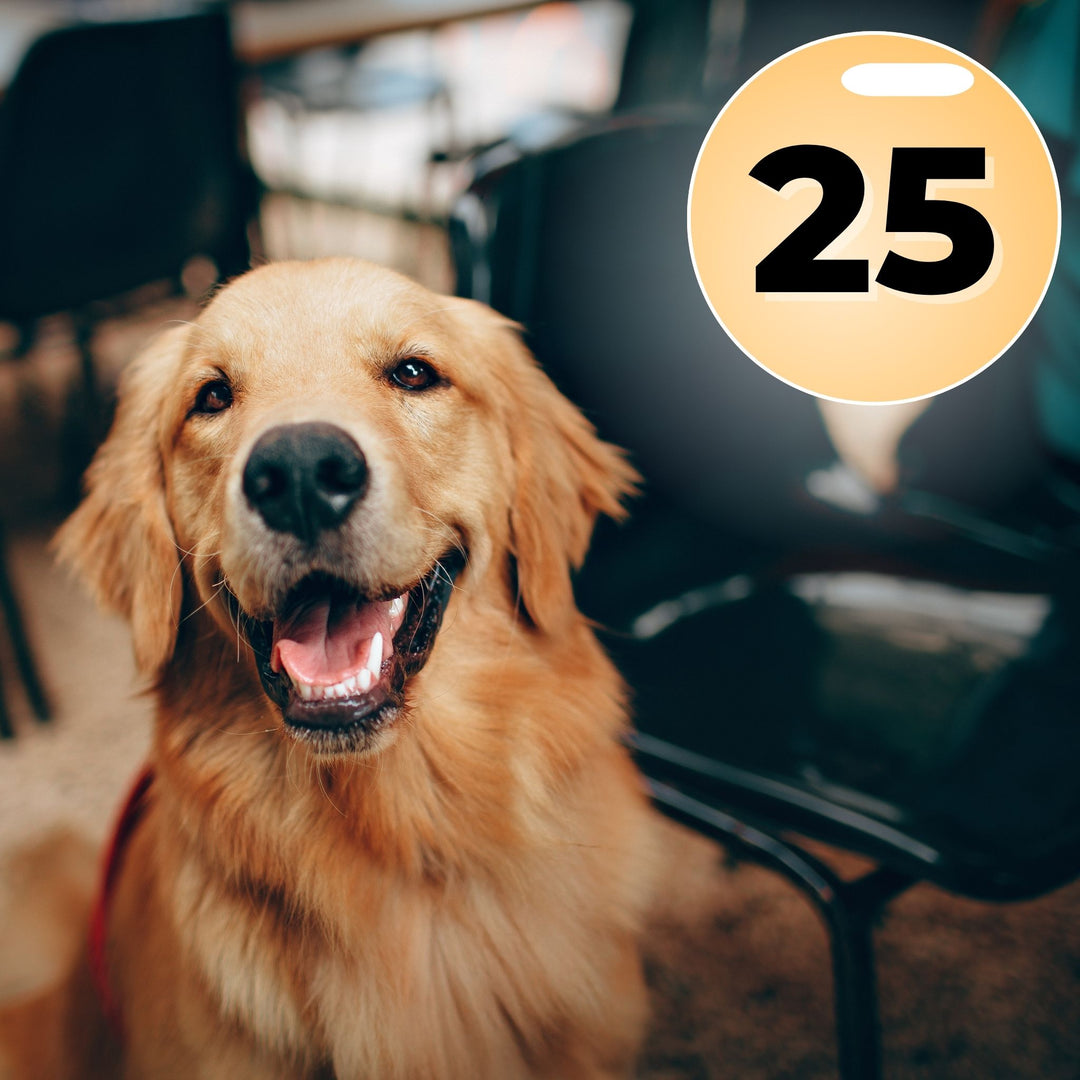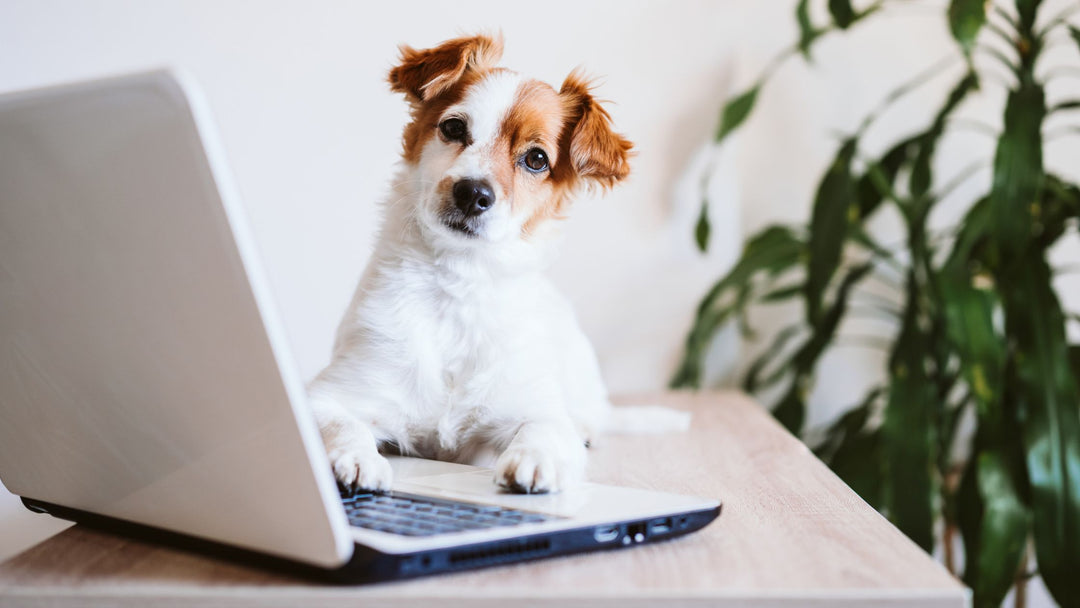When Training at Home Backfires

You've been practicing Scent Work with your dog. Maybe you've been following the K9 Nose Work® training method that we cover in our Foundation Sniffing Program. Perhaps you are using an operant training approach. Or an entirely different training approach altogether. Regardless, you may be noticing an issue: your dog finds the hides perfectly when you're practicing with them at-home...but not so much when you are at a trial or when someone else is setting the hides for you. But why?! Let's discuss some potential causes.
Before we start diving into this, I want to give credit where credit is due. All of these topics were raised by Dr. Lauryn DeGreeff of U.S. Naval Research Laboratory during her Chemistry of Odor, Odor Basics for Detection and Training talk at the 2019 NACSW/CNCA Symposium and webinar offered through NACSW.
What Are You Really Training Your Dog?
Whenever we are discussing dog training, clarity is crucially important. Remember: we are working with a completely different species, one that interacts with the world entirely differently than we do.
With that in mind, we always need to ask ourselves: what exactly am I training, teaching or asking of my dog in this moment? Is what I WANT to teach, train or ask of them the same as what I am ACTUALLY teaching, training or asking of them?
This may sound silly or pointless, but taking the time to really evaluate what you are doing and WHY you are doing it and HOW it may go terribly wrong can save you a great deal of stress and heartache later.
For instance, one of the examples Dr. DeGreeff discussed during her presentation was a dog who had supposedly been trained to detect twins, in that the dog could detect the odor of a twin person in a controlled setting. If true, this would be extremely interesting and demand further study! Only there was one problem...the manner in which the dog had been trained.
You see, a ball box was used to deliver a ball to the dog when they located the correct twin odor. Great, reward at source! Here's the rub - there was only ever ONE ball box in the search area...and it was ALWAYS above or near the correct twin odor so that the dog could be properly rewarded.
"So?"
Our dogs are smart and contextual little creatures. Therefore, the dog in this example figured out just go to the place where the ball box is and BANG, reward delivered! If you moved the ball box AWAY from the supposed trained target odor - twin odor in this case - suddenly the dog was no longer alerting on that supposed trained target odor. Instead, the dog was alerting on the ball box.
In other words, the dog was going to wherever the ball box was and twin odor was never part of the game in the dog's mind.
"Oh..."
Again, it is not that the ball box approach in and of itself is "bad". In theory, maybe it could work well for a ball-driven dog. However, to make sense to the dog, you would need to have ball boxes in ALL the potential target odor locations and only deliver the ball when the dog found the correct twin odor. Otherwise, you are not training the dog to detect the target odor, you are training the dog to detect the ball box. You would also want to eventually fade the ball box or transfer the concept of delivering a ball another way that was easier and more convenient.
The take away from this example is the importance of taking the time to evaluate what you are doing in your training sessions:
Are you actually training your dog to detect the target odor you think you are, or are you training them to do something else entirely?
Should the Dog Only Find YOUR Target Odors?
Dr. DeGreeff also brought up the fact that target odors, even of the same type, may be vary.
In other words, the Birch you have in your odor kit may very well be different than the Birch I have in mine.
"WHAT?! I go through all the trouble to get my odors from reputable vendors! MY BIRCH IS THE CORRECT BIRCH!"
Now, I don't mean that you're getting Birch off the black market or anything like that. Rather, what I mean is that your odor kit may be stored differently than I store mine, and therefore will have a different odor profile.
For instance, here is a photo of one of my older odor kits. I have my Birch oil vial in the larger canning jar, clean scented q-tips in one of the smaller canning jars, used scented q-tips in the other canning jar. My empty odor vessels are stored inside the ziplock bag. All of this is contained inside a MTM Survivor Dry Box.
Here's the thing: all of the items within this kit will give off some odor, including the kit itself. Some items will give off more odor than others.
Then there is the room the kit is stored in...that room will give off an odor too.
Lest we forget where we actually place our hides when we are training...think of the odor transfer when you are using a sample vial as a ground hide in some mud.
All of these factors will impart different odor onto my Birch.
"What does all of this mean?!"
If you only practice with your odor kit, your dog may think they are only supposed to find YOUR odor kit and all the odors associated with it.
"...What am I supposed to do?"
Ideally, particularly if you are interested in competition, swapping odor kits with your Scent Work friends can work wonders. Doing so helps your dog to successfully locate a target odor regardless of whether it is from your odor kit or not.
However, this is not always possible. Another option is to purchase odor kits from a few separate vendors. Each vendor will process and store their odor differently, so they will all have their own specific odor profile. Alternating which odor kit you use in your practice session can really help. To take it to another level, you can even consider storing these odor kits in different rooms.
The point being is you want to be certain your dog understands they are to find Birch, not only YOUR Birch.
Are You Training Your Dog to Follow Your Odor?
When you set hides, are you certain your dog is finding the target odor and not YOUR odor?
"Sigh...what do you mean now?!"
Every time you or I walk from Point A to Point B, we leave behind a trail of dead skin cells, microbes, perfumes and other odors. In professional detection circles, this is known as a skin raft odor trail. It may be gross to think about, but this odor trail we leave behind is completely normal and is the very thing professional detection dogs use to track missing people.
Being your dog's caretaker, they are particularly familiar with your skin raft odor trail. Meaning it is completely possible your dog would find it easier to simply follow your skin raft odor trail than trying to solely zero in on the target odor alone.
However, your skin raft odor trail will not be there at a trial, because you are not the one setting the hides.
"Uh oh..."
Yeah, definitely something to think about!
During her talk, Dr. DeGreeff suggested at the very least handlers should set blank hides in the search area when they are training. This way there will be several paths that you've taken within the search area, thus leaving behind several skin raft odor trails and in so doing, you are forcing the dog to solely work out the target odor to get to the correct answer.
From a training perspective, I would have this suggestion for you, for clarity's sake:
- Set your blank hides (meaning those odor vessels and adhesives, such as putty or Gluedots, that have never been in contact with any target odor) first.
- Then, go put some gloves on to set your odor hides.
- Once the odor hides are set, take your gloves off and wash your hands.
- Now, go back and walk to each of your blank hides but do not touch them. This way, your skin raft odor trails to the blank hides are freshest.
What you want to avoid doing is putting out your odor hides FIRST, as this would contaminate you with the target odor, and then put your blank and clean hides out in the search area...because they will no longer be clean and blank. This set-up can hopelessly confuse your dog since they will likely hit on a former-clean-but-now-smells-of-target-odor hide and not be rewarded for it.
Another option is to age your hides, to give your skin raft odor trail a chance to dissipate. Aging means you would set your target odor hides within the search area for a certain period of time before you ever run the dog to actually search.
A few caveats about using aging hides:
- Please do NOT age your hides when practicing out in public or on field trips. The possibility of another team coming up and working your space, without knowing your hides are there, is too high.
- If you have never aged your hides before, introduce this concept gradually. This means, waiting 5 to 10-minutes the very first time you do this is more than enough. Gradually increase the length of time you age the hides, until they are out in the search area for a maximum of 1-hour before you run your dog.
- Know that the longer your hides are set before the dog has a chance to actually search, the more time those hides have to interact with the environment as a whole. You would want to keep all of those factors in mind when designing your search, thinking of how those factors will affect the overall search as time goes on. If you're interested in having a better understanding of what those factors are and what to keep in mind, check out our Hide Placement for Trial course.
- Please do not feel as though you always have to age your hides, you do not! Your searches should NOT always be super challenging. Doing so is a surefire way to burnout your dog and turn the fun sniffing game into a boring and dreadful drill.
Lastly, having other people set your hides is a fantastic way to work on this issue. This way your dog will not have YOUR skin raft odor trail to follow as they are working the search area.
Making Changes? Be Patient with Your Dog
If you think you would like to implement any of these suggestions in your Scent Work training, please be mindful it may substantially change the overall picture to your dog. In other words, they may initially struggle to work out the problem.
Breathe and be patient with them. You should start seeing progress fairly quickly, but all of that is relative to your own individual dog and how convinced they are that the sniffing game was really about something else entirely.
The point being that we must be clear in our training to ensure that we and our dogs are on the same page. Taking the time to assess how our training is going and what our dog may actually think the game is all about can avoid having our training sessions backfiring on us later.
Are you interested in furthering your Scent Work training skills? Check out the NACSW/CNCA Conference and familiar continued learning opportunities.
Author: Dianna L. Santos, KPA-CTP, CPDT-KA, CNWI
Dianna has been training dogs professionally since 2011. She has done everything from teaching group training classes and private lessons, to specializing in working with fearful, reactive and aggressive dogs, to being a trial official and competition organization staff member.
Following a serious neck and back injury, Dianna was forced to retire from in-person dog training. But she was not ready to give up her passion! So, she created Pet Dog U, Dog Sport University and Scent Work University to provide outstanding online dog training to as many dog handlers, owners and trainers possible…regardless of where they live! Dianna is incredibly grateful to the amazingly talented group of instructors who have joined PDU, DSU and SWU and she looks forward to the continued growth of PDU, DSU and SWU and increased learning opportunities all of these online dog training platforms can provide.
In June 2021, Dianna and her business partner, Sean McMurray launched Cyber Scent Work, Inc., an organization that operates in the gray space between training and trialing in Scent Work. With Cyber Scent Work, Inc., handlers have the opportunity to earn Qs, titles and ribbons while also receiving helpful training advice regardless of whether they qualify or not! Be sure to check out Cyber Scent Work, Inc., you will be happy you did!
Join Our Newsletter
Stay up to date with all the happenings at Scent Work University, including the release of new online courses, seminars, webinars, eBooks and receive exclusive promotions and discounts!




